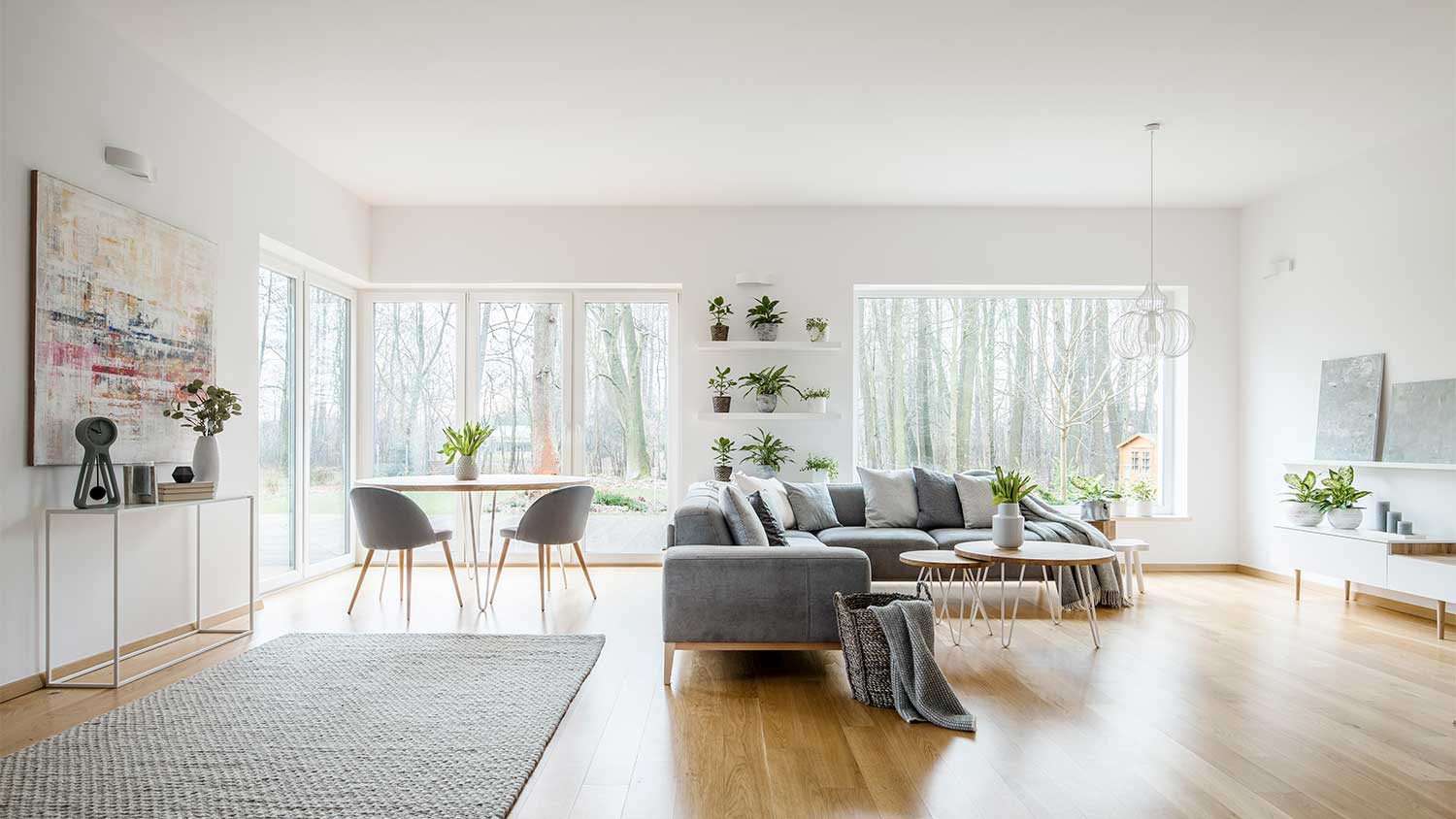What Is the Difference Between Contemporary Design and Modern Design?
Two distinct styles, two different time periods


Contemporary design refers to the style of the present moment.
Modern design originated in the early to mid-20th century.
Contemporary design is ambiguous and fluid.
Modern design prizes simplicity and functionality.
Both design styles incorporate natural materials.
Although some people may refer to contemporary design and modern design interchangeably, there are actually stark differences between these two styles. Modern design originated in the early to mid-20th century, whereas contemporary design reflects present-day trends. Contemporary design is fluid and ambiguous by its nature, while modern design remains focused on form, function, and simplicity. But while they’re definitely different, both contemporary and modern design remain popular interior design trends.
Here, we’ll discuss both of these design styles in-depth, so you have a clearer understanding of each.
Contemporary Design Pros and Cons

Contemporary design always refers to the style of the present moment, whether that’s 2002 or 2022. It’s not rooted in a specific time period; rather, it’s always evolving according to current trends. As you might imagine, this fluidity makes it hard to pin down exactly what constitutes contemporary design. It also borrows heavily from other styles and design movements, from Art Deco to minimalism.
At the moment, there are a few general qualities that help define this style. Clean (and sometimes curved) lines, neutral palettes, cool tones, and stark contrasts (like blacks and whites) are all present hallmarks of contemporary design.
Here are some of the biggest pros and cons of contemporary design, especially as it applies to your home:
Pros
All about decluttering your space, which helps cultivate a sense of openness in your home (this is especially beneficial if you have a small home)
Incorporates lots of natural light, which can help cut down on energy costs (in addition to brightening your space, of course)
Uses a mix of materials (natural fibers, polished stone, wood, etc.) to create texture
Cons
Can be expensive since you have to stay on top of current trends and change with the times
Sometimes looks “cold” or impersonal
Decor is ornamental rather than functional, which may not be everyone’s cup of tea
Modern Design Pros and Cons

Modern design has a more distinguished aesthetic than its contemporary counterpart. Drawing from German Bauhaus and Scandinavian design, this style originated in the early to mid-20th century. Like contemporary design, modern design is generally simple and uncluttered with an emphasis on clean, smooth lines and natural materials.
However, there are some key differences between these two styles. Modern design prizes simplicity and functionality, incorporating more natural materials and earthy tones than contemporary design. Symmetry and balance are also important elements of this style.
Here are some of the primary pros and cons of modern design:
Pros
Incorporates lots of neutral, natural tones for a sense of warmth and light
Primarily uses natural materials like wood, stone, and metals, which tend to be more sustainable and durable than other types of materials
Wide-ranging selection of furniture and decor to choose from
Cons
Tends to prioritize functionality over comfort, which may not be well-suited to everyone’s tastes
If the exterior of your home isn’t modern, it could look a bit unusual to have a modern interior
Contemporary Design vs. Modern Design
So while contemporary design and modern design share some similarities, there are also some notable differences between the two
History
Contemporary design is fluid and always evolving according to current trends. Modern design, on the other hand, has a distinct aesthetic that’s rooted in German Bauhaus and Scandinavian design. So while what constitutes “contemporary” design will definitely change over the decade, a “modern” space will have the same elements as it did years ago.
Aesthetics
At present, contemporary design is defined by sleek surfaces and furnishings, curved lines, minimalism, and neutral colors. Modern design is defined by balance, symmetry, functionality, clean lines, and earthy colors.
For instance, if you live in a contemporary house, you’ll see ultra-modern furniture, cutting-edge art, and open-floor plans. If you live in a modern house, you’ll see minimal decoration and materials like exposed brick and unpainted wood. Paint colors for a modern home include earthy yet vibrant shades that don’t overwhelm the space.
Sustainability
Both contemporary design and modern design incorporate natural materials, such as wood, stone, and leather. However, contemporary design also incorporates other kinds of materials, like nickel and steel, as well as natural textures like jute and hemp. Because of this emphasis on natural materials, both design styles can be sustainable.





- Modern Design Keeps Your Space Functional (and Fashionable)
- 20 Innovative Modern Living Room Ideas
- Don't Miss These 10 Home Decor Styles Making the Leap Into 2022
- What’s Your Home Decor Style? Find Out Which Popular Interior Design Is the Perfect Fit
- Scandinavian Design 101: How to Create a Nordic-Inspired Home
- 22 Inviting Mid-Century Modern Living Room Ideas
- 16 Modern Bedroom Ideas for a Cozy and Chic Sanctuary
- What’s the Difference Between Farmhouse and Rustic Decor?
- How to Create a Design Board to Achieve Your Dream Home
- What Is Mid-Century Modern?










